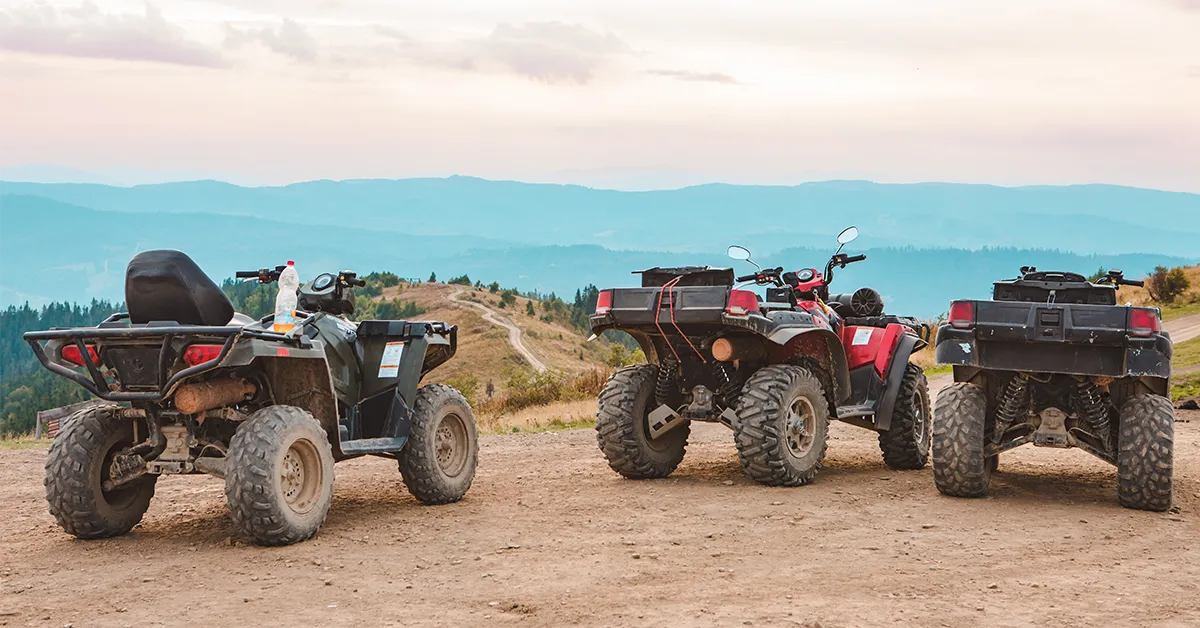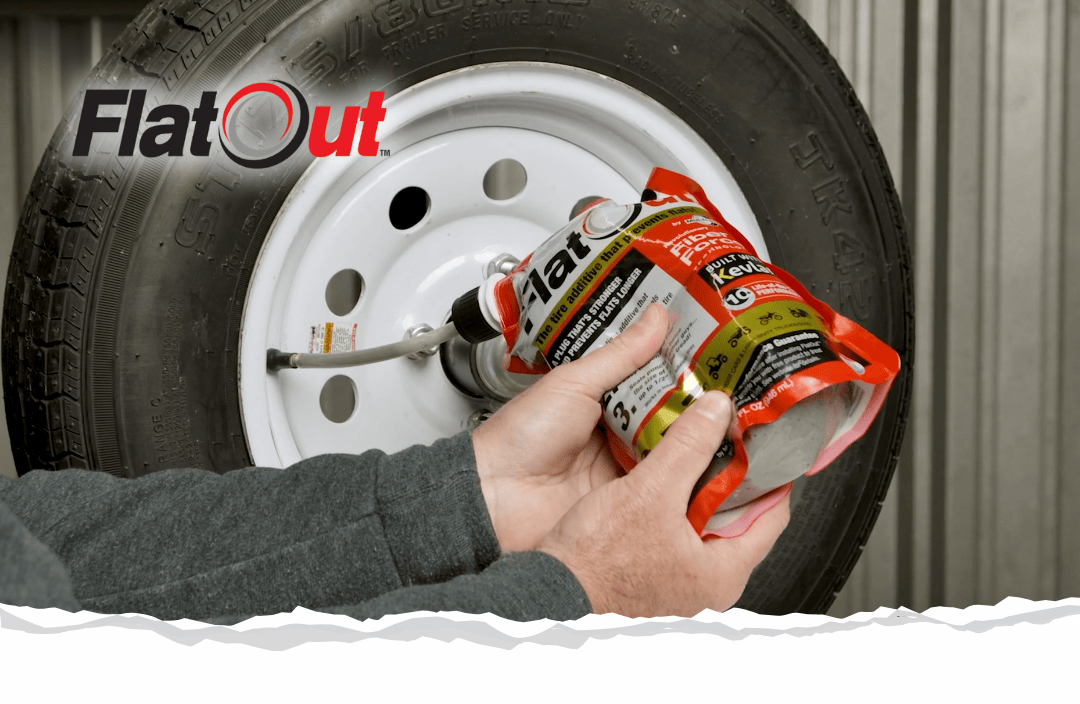
How Tire Sealant Works
If you’re on a weekend trip, a flat tire can delay your plans and put a damper on the whole

If you have ever been stranded by a flat tire on your ATV ten miles from your truck, or a flat on your combine in the middle of harvest, or a flat on your backhoe at just the wrong time, then you know the importance of good tire sealants. The following paragraphs will explain some of the critical characteristics of a modern, high-performance tire sealant which is sure to help you avoid wasting your hard-earned money on a sealant that doesn’t work, and to avoid the horror stories associated with inopportune flats.
But, before we get into what makes a good sealant good, let’s look into how a modern, preventative maintenance sealant works. The keyword is “preventative.” The sealants should be installed into the tire as early in its life as possible so punctures can be sealed at the instant that they occur. A modern tire sealant is a suspension of synthetic fibers and fillers in a thickened ethylene or propylene glycol (anti-freeze) and water “carrier system” which allows the fibers and fillers to move within the tire in liquid form.
When a puncture occurs (almost always on the bottom of the tire where the sealant pools when rotating at low and moderate speeds), the air pressure in the tire propels the suspended fibers and fillers into the puncture where the fibers begin to snag on the rubber. In very short order (1 to 3 seconds) the fibers form a tangle in the puncture which stops the escaping air. We’re not done yet! As the tire rotates, the rubber surrounding the wound flexes and packs more fibers into the wound with each rotation until no more fibers will fit. This is where the fillers come into play. The fillers are extremely small 2 particles which pack in-between the fibers in the plug like the mud in a beaver dam to form a permanent airtight seal that will last the life of the tire.
Now that we know how a sealant works, we can consider the performance features that make a good sealant good. The following performance characteristics should be considered when selecting a sealant for your critical equipment. While each of these features might not be specifically mentioned on the package or in the literature, all reputable sealant manufacturers will include a phone number on their package and would welcome questions from their performance-minded customers.
Fibers constitute the backbone of the tire sealant. The stronger the fibers, the stronger the tire repair. The strongest fibers are state-of-the-art, synthetic fibers such as those used in tire cord or bulletproof vests. Using a variety of fibers is also very important, especially in the relatively thin carcass of an ATV, golf cart, or lawn implement tire. The more varied the fibers are in both length and in the degree of branching, the faster they seal and the more permanent the seal is.
Once a strong plug is formed by the fibers, it needs the final seal provided by filler particles, which lodge between the fibers and form an effective, airtight plug. The use of these fillers is imperative for a high-performance sealant.
The only purpose for the liquid portion of the sealant formulation is to carry the fibers and fillers to the site of the puncture in your pneumatic tire. If the sealant separates in the bottle, it will separate in the tire, and if it separates in the tire it will not act as a sealant! Beware of sealants that show signs of separation in their container, and surely stay away from products that suggest shaking or mixing before using—they are a failure waiting to happen! Beware also of sealants that claim a limited “effective life”…. a high-performance sealant should last for the life of the tire—and then some.
Not everyone uses their equipment at -30°F, but most sealant users in this country experience below-freezing temperatures at least a few times per year. Be sure that your sealant is freeze protected to prevent the possibility of a horrendous vibration caused by a big lump of ice in your equipment’s tires, not to mention the fact that an “ice cube” will not seal a puncture! Top-quality sealants usually provide protection down to -20° or -30°F.
The inertness of a sealant means that the sealant does not react chemically with any part of the tire/wheel assembly. This is critical to maintaining the manufacturers’ warranty on both 4 wheels and tires. Any sealant that works by “curing” or “reacting with air” should be avoided like the plague. Any reaction is too much reaction.
Most (if not all) tire sealants contain water, and we all know what water does to metal after prolonged contact—rust on steel and corrosion on aluminum. Corrosion inhibitors are used widely in industry to prevent corrosion and rust in water cooling systems—this same technology works in sealants as well. Be sure that your sealant is effectively rust and corrosion inhibited before you put it into those wheels that could cost hundreds to replace!
While the most dramatic benefit of a high-performance tire sealant is the prevention of flats from large punctures, the highest economic impact, especially for the over-the-road user, is the prevention of under-inflation from slow leaks. Undetected under-inflation drastically reduces the life of a tire and is the main cause of catastrophic failures (blowouts) in over-the-road tires and “bead roll-offs” in off-road tires. The financial savings associated with the use of high-performance sealants can be overshadowed by the safety benefits!
Sealants are not sealants are not sealants!! The old adage holds—Only a wealthy man can afford cheap tools (sealant). Check before you buy!

If you’re on a weekend trip, a flat tire can delay your plans and put a damper on the whole

Even a small puncture can ruin your weekend. FlatOut not only seals punctures, it also prevents slow leaks around the